Scouting Notes: 2021 AFL U19 National Championships – Western Australia vs. South Australia

WESTERN Australia scraped home by five points against South Australia in Saturday’s AFL Grand Final curtain-raiser, providing a chance for either state’s Under 19 squads to shine on the big stage. Claremont swingman Jacob Van Rooyen was the hosts’ saviour with his last-gasp goal, but there were plenty of strong performers throughout the day. We take you through how all 46 players fared in the latest edition of Scouting Notes.
WESTERN AUSTRALIA #3 – #20
By: Michael Alvaro
#3 Richard Farmer (Subiaco)
One of many exciting inclusions for Western Australia, Farmer brought a spark to his side’s forward line with injections of pace and skill. The West Coast Next Generation Academy talent worked up the ground and looked to hurt SA on the way back to goal, getting creative with ball in hand. Farmer’s highlight for the day was his goal in the first quarter, which saw him take on the man on the mark before slotting home from 45 metres out.
#5 Kaden Harbour (East Perth)
Another addition to WA’s front six after being an emergency for game one, Harbour played a typical small forward role with his smarts and pressure. While still a touch raw at times, the East Perth prospect delivered some terrific balls forward having worked up to the wing, and also backed his pace in transition to burn opponents and make things happen. He hit the scoreboard in term four with a 40-metre set shot, earned after marking inside 50 on the stretch.
#6 Zac Fleiner (West Perth)
The run-and-gun West Perth defender would have been stoked to make his return from injury on such a big stage, slotting into Western Australia’s back six and looking to generate some drive on the rebound. He hit the ball hard under his helmet and pressed high up the ground, attempting to turn the ball over in dangerous spots. He was caught out by SA’s clever small forwards on the way back a few times and showed some rust in his kicking, which was understandable given the high pressure gauge.
#7 Chase Bourne (South Fremantle)
The youngest player afield and the only one born in 2005, Bourne provided a taste of things to come when he is draft-eligible in 2023. He is another prospect for Fremantle fans to monitor given he is tied to the Dockers’ NGA program, but has the makings for a player who will be snapped up in the open draft under the incoming rules. Bourne played forward for WA and showed some of his flair, leaping for the ball and looking to use his skill when in possession. He was gifted a goal in term two from a deliberate rushed behind, serving as a handy confidence booster.
#8 Jahmal Stretch (Claremont)
Like Harbour, Stretch was an emergency in game one and proved a much-anticipated addition to WA’s forward mix. He took some time to work into the contest but provided his usual glimpses of brilliance, leaping at the ball and showing great nous at ground level. He snared a couple of goals; one in the second term from an opportunistic toe-poke in the goalsquare, and the other from a classic front-and-centre rove inside 50. A Halls Creek native, Stretch is as exciting as small forwards come at his best and has many of the traits required for the position.
#10 Arthur Jones (Claremont)
Perhaps one of the lesser known inclusions for WA, Jones quickly made his mark with eye-catching play on the wing. The Claremont talent has plenty of tricks and is in good form of late, showing as much as he moved the ball on fluently and looked to get creative on the outer. His ability to run in spurts helped WA’s transitions, and he made some clever plays with quick thinking. Jones also snared a fantastic running goal in the opening term, marking a promising state game for him.
#12 Lochlan Paton (West Perth)
One of his side’s best performed players on the day, Paton’s quick and clean hands were a real feature of his game. The West Perth product started in his usual half-forward post, pushing high up the ground to help link WA forward with good intent and skill. As soon as he ran up to the wing, Paton would look to lose his opponent on the way back and showed positive work-rate in such instances. He also got a run in midfield during the second quarter and his toughness boded well considering the stakes of the game.
#14 Sam Gilbey (Claremont)
One of the impressive bottom-agers to come into WA’s line-up, Gilbey was a positive rebounding force for his side, particularly in the first half. He was caught holding the ball with one of his first possessions, but adjusted quickly and was hardly dismayed as he broke forward confidently. Gilbey chimed in for a couple of handy intercepts high up the ground and used his weaponous left-foot to send WA into attack, with the second quarter arguably his best.
#15 Finn Gorringe (East Fremantle)
The West Australian skipper was typically reliable as one of the few remaining pieces of his side’s heavily rotated defence. He competed really well to force turnovers on ground balls in the back half and looks to have improved his kicking to become much more dynamic on the rebound. Gorringe opened up the play with kicks which stretched the ground for WA and set his side’s runners off into space, doing so with great composure. His League experience has looks to have served him well, riding the bumps all day and paying his defensive dues.
#17 Luke Michael (West Perth)
Michael was a solid member of Western Australia’s back line, not proving as prolific as others but playing his role. He pushed right up the ground to help set up a high defensive line, producing a couple of handy plays on the wing with an intercept mark and running foray. He laid some hard tackles inside defensive 50 too, wrapping up opponents to force stoppages.
#19 Kade Dittmar (East Perth)
With plenty of ball winning responsibility resting on his shoulders, Dittmar was a little quiet to start the match but began to really come into his own after half time. The bull-like midfielder began to have his usual impact around the ball with strong clearance wins, admittedly dumping some kicks forward but nonetheless snatching metres for his side. He displayed a strong work rate and could have capped his day with a couple of goals but couldn’t quite convert from two set shot opportunities.
#20 James Tunstill (East Perth)
Lining up alongside East Perth teammate, Dittmar at the centre bounces, Tunstill started the game brightly and looked like being WA’s most productive midfielder. His hands were slick at each contest, sweeping up ground balls on the move and continuing his momentum to bustle through tackles. His output steadied after a terrific opening term, but Tunstill was still able to find the ball in his usual midfield post and has been a staple of his state’s Under 19 side.
WESTERN AUSTRALIA #22-45
By: Declan Reeve
#22 Jack Avery (Perth)
Avery filled his usual role in the backline, but seemed to play with more freedom than the previous Under 19’s Championship fixture. He certainly looked to push up the ground and intercept outside of the defensive 50 more or break off from his opponent and spoil in front of other packs. Avery looked to spread the ball when he won it, often looking to kick to to the wings or back flanks.
#23 Matthew Johnson (Subiaco)
The recipient of WA’s best on ground medal, Johnson was a major ball winner around the ground for his side and generally used it well, being a key part of quite a few attacking plays, looking classy at times despite the scrappy nature of the contest, with his vision allowing him to hit line breaking handballs forward at times and catch SA off guard. Johnson’s positioning around stoppages was a highlight of his game and arguably the best of anyone on the ground, regularly winning first possession but generally being marked tightly by opponents, so getting wrapped up before he could get away. Johnson was directly involved in the final goal for the game, getting it inside forward 50 and staying composed to hand it off well to Jacob van Rooyen.
#24 Jedd Busslinger (East Perth)
Busslinger was arguably the best of the WA tall defenders across four quarters, consistently sticking with his opponents and managing to spoil when they got in front of him on the lead. His leap and read of the ball meant he was able to take some impressive intercept marks, generally following up with a smart disposal to the best option, often looking to handball it off to teammates who were running past or out in space. There were times where Busslinger found himself in trouble in two on ones or when he had been given a poor disposal from a teammate, but his composure stood out in those situations and he regularly got himself out well. Certainly one to watch for in the 2022 draft
#26 Kane Bevan (West Perth)
The 2022 prospect was one of the more consistent players across the game, with a genuine four quarter performance where it felt like he had a key involvement in play every few minutes. Bevan was a strong contested ball winner for WA around the ground, with one of his hardball wins even resulting in and injury to SA’s Arlo Draper due to his attack and technique at ground level, where he generally used the ball well by hand when he had won it, or tried to get away and kick forward. Another impressive part of his game to go with this was his ability to impact in the air, taking some impressive contested marks around the ground and causing headaches for even taller opponents in that regard.
#27 Oscar Armstrong (East Perth)
Earning himself a call up to the team after an impressive season for East Perth, Armstrong played mostly on the wing for the game, unfortunately unable to significantly impact the contest. Armstrong did however position dangerously around contests, often holding out the back looking for a releasing handball or ready to tackle an opponent breaking through.
#29 Jacob van Rooyen (Claremont)
After a good few weeks up forward for Claremont in the WAFL Colts, van Rooyen was once again switched into defence for WA, after starring in the role in game one. van Rooyen found it a little more difficult to impact the contest than the previous outing against SA, not able to drift from contest to contest as freely and struggling to hold as many marks, van Rooyen was still positioning as best he could in the defensive 50 to cut off high balls coming in. Despite not having it as easy, he was still able to get a bit of ball in the backline, generally using it well out of defensive 50. He got swung forward in the late stages of the game, kicking the winning goal with less than a minute on the clock as he got onto the end of a handball chain and snapped through.
#30 Jye Amiss (East Perth)
After a quieter couple of weeks in terms of goal output, Amiss was looking ominous early with his leading and marking, taking a contested mark early in the piece, Amiss had his day cut short after he was fallen on awkwardly after a mark and further aggravated a knee injury he had got strapping for in the first quarter.
#31 Eric Benning (Claremont)
Not putting up huge numbers, it was another game of Benning showing flashes of his athleticism and just how difficult it makes him as a match up, able to get good separation on his leads with his speed, but also make up for any missteps with his fantastic leap allowing him to get up high and take it above his head. Benning’s ability to win the ball below his knees for a big man was impressive as well, able to beat smaller opponents to it.
#32 Luke Polson (Peel Thunder)
Earning a call up after a solid season at Pell Thunder, where he earnt a senior debut, Polson was a reliable tall target down forward who held a few contested marks or tapped to his crumbers well. Polson used his strength to his advantage in marking contests or to create separation on the lead, pushing opponents off to get his hands free when marking. Polsons work up the ground was also impressive, pushing up to take marks on the wing and be a link up player for his side
#38 Brady Hough (Peel Thunder)
After impressing in game one, Hough had since gone back and put in an impressive performance for his WAFL League debut with Peel, and returned to this fixture with more confidence and more freedom to play up the ground. Hough was arguably best on ground in the first half with his play on the wing, with WA looking to get the ball in his hands as he was using it so well going forward, with his kicking inside 50 particularly impressive. He racked up the marks around the ground, with his workrate to get back and assist in defensive 50 impressive and a big reason for WA’s efficiency on the rebound. Got a goal after he took an impressive contested mark, then got given a 50 meter penalty to slot it from right in front.
#45 Jackson Broadbent (Peel Thunder)
The bottom aged ruck would’ve impressed many with his performance as he stood up well, and probably won the ruck battle against more strongly built opponents. Shouldering the ruck duties all day for WA, Broadbent just kept going, having an impressive around the ground impact with his marking and ability to win it at ground level, especially in comparison to his opponents. In the ruck contests, Broadbent did well to fight for front position and direct his taps to the advantage of teammates, but showing he could follow up and win his own taps in necessary, following up with generally good ball use.

SOUTH AUSTRALIA #2-21
By: Micah Hann
#1 Isaiah Dudley (Central District)
Dudley was one of South Australia’s better performers as his forward half pressure and scoreboard impact were outstanding. Despite being undersized, Dudley repeatedly brought down bigger opponents and was able to exert his influence on the contest whenever the ball was in his area. He earned himself an opportunity to hit the scoreboard early through his pressure, winning a holding the ball free kick, though he was unable to convert. Dudley finally got his reward with a goal from a set shot in the third term, where he was able to get out the back and mark inside forward 50. His highlight of the day came with a quick transition from the defensive half, which allowed him to get goal side of his opponent and run on to kick a goal. Dudley’s pressure in the forward half was a highlight throughout and he got maximum reward for his possessions, converting his team-high third goal from another set shot late in the last quarter, to give South Australia a real chance to win.
#2 Blayne O’Loughlin (North Adelaide)
O’Loughlin was one of South Australia’s best, orchestrating their fightback in the second half with his damaging rebound from defence. O’Loughlin looked more engaged defensively in the early part of the contest and earned himself a free kick after catching Western Australia’s Luke Polson holding the ball. Taking the kick-in duties, O’Loughlin was near flawless with his ball use out of the goal square, consistently finding teammates around the defensive 50 zone with his low, penetrating kicks. It was the second half though where O’Loughlin really got going as he got his hands on the footy more in open play and transitioned the ball with meaningful drive forward of centre. His willingness to take the game on with his ball use created opportunities for South Australia in the forward half and was one of the catalysts for their second half comeback.
#3 Will Spain (Sturt)
South Australia looked much more engaged to start the game and Spain was a key driver of their early tackling and pressure at the contest. His work-rate and tackling has been an absolute staple throughout the year and it was on display again from start to finish. He found a fair bit of the footy through the first term and used it mostly to good effect with the highlight being his classy delivery to Lukas Cooke on the lead. Spain demonstrated his reliability across all four quarters where his work at the contest stood out and his repeat efforts to pressure his opponent and win the footy at ground level were consistent throughout the match.
#6 Lachlan Grubb (Central District)
Grubb was lively early, finding a little bit of the footy and winning a holding the ball free kick on the back of his tackling and pressure. From there he was relatively quiet, presenting, often without reward. He had a nice moment reading the ball off the pack before accelerating from the contest and delivering a kick to switch the play, which allowed South Australia to launch an attack from the far side. His pressure when the ball was in his area was good but the opportunities were limited and he wasn’t able to quite have the impact he would’ve hoped.
#8 Lewis Rayson (Glenelg)
It was a pretty composed performance from Rayson, who executed both offensively and defensively whenever called upon. Stationed on a wing for the vast majority of the match, Rayson’s work-rate to support his teammates deep in defence was really impressive. He orchestrated some rebound from defensive 50 with a couple of long, accurate, penetrating kicks and his use by hand whilst under pressure was quality. He showcased his composure and evasiveness on a number of occasions where he was able to avoid the tackler and deliver the footy to teammates in open space. Despite having some moments offensively, it was his defensive output that was most impressive. He tackled strongly, was able to spoil contests aerially and he had a number of intercept possessions where he was able to slow down the opposition. It was a solid performance from the South Australian skipper and one that highlighted both his offensive and defensive capabilities.
#9 Hugh Jackson (North Adelaide)
There weren’t too many moments for Jackson in the first three quarters in what was a pretty quiet performance. One of his few highlights came in the second quarter when he shrugged a tackle, cleverly avoided a second opponent and delivered to a teammate by hand. He hit the scoreboard early in the fourth quarter after marking inside 50 and slotting a nice goal from about 40m out directly in front. He had a second opportunity from about the same spot but pulled it across the face for a minor score. His work-rate from contest to contest was evident but his wing role prevented him from being overly proactive at the contest and he struggled to win the footy on the outside.
#11 Harvey Harrison (North Adelaide)
Harrison got his first chance to represent South Australia this year, having been named as an emergency for the first game against Western Australia a few weeks ago. Harrison was another who brought the tackle pressure early but took some time to work himself into the game. He demonstrated his speed and agility in the first quarter when he intercepted a handball and burst through traffic. He started to find a bit more of the footy in the third quarter and had some nice moments by foot, though he was often rushed and wasn’t able to find the time to execute consistently. Harrison was certainly up to the level physically and his football will be better for the experience. #12 Cade Kennedy (West Adelaide) Kennedy split his time through the midfield and across half forward and was another of the South Australian’s who really started to come into the game in the second half. The third quarter was his best as South Australia started to get the game on their terms and Kennedy was one who really started to find the footy. His work-rate from contest to contest was a feature and he found plenty of ground ball which he often won and distributed by hand to teammates on the outside. His disposal was a touch inconsistent but he still had some nice moments by hand and foot. When played in his natural position through the midfield he looked comfortable at the level and showed off his ability to find the footy both at stoppage and in open play.
#13 Nasiah Wanganeen-Milera (Glenelg)
Wanganeen-Milera gave us more of what we’ve become accustomed to seeing from him. He used the ball with high class as we’d expect yet still managed some jaw-dropping moments, in particular a spearing kick off the side of his foot to set up Hugh Jackson for a shot on goal. His evasiveness with ball in hand was on full display again, as he repeatedly showed candy to his opponents before wheeling onto his left or right foot and delivering accurately to a teammate. He doesn’t need a lot of space to get his kick away and his delivery inside 50 in particular is sheer class. Wanganeen-Milera also had some moments where he showed some real footy IQ with some deft touches to keep the ball alive or to find a teammate in space. In South Australia’s best again, Wanganeen-Milera continues to impress every time he takes the field.
#14 Jacob Owens (Glenelg)
After a quiet start, Owens had a nice patch in the second term where he managed two of South Australia’s 3 goals to half time. The first came from an impressive snap from the boundary that capped off some quality play from the South Australian’s and started to turn the momentum. Shortly after, Owens hit the scoreboard again with a check-side goal on the run that dribbled through for his second major of the quarter. A willing tackler who chased hard all day, Owens laid a few strong tackles in the second half as South Australia pushed Western Australia right to the end.
#18 Arlo Draper (South Adelaide)
Draper somewhat surprisingly started at half back where his classy ball use was important in repelling some of Western Australia’s early attacks. Draper showed off his athleticism with a contested intercept mark and added to that highlight with some precision kicking as he rebounded from defensive 50. Unfortunately Draper was forced from the field late in the second quarter with a shoulder injury which occurred in a physical contest with Western Australia’s Kane Bevan.
#21 Adam D’Aloia (WWT Eagles)
One of a few bottom age prospects that came into the side, D’Aloia was prolific through the midfield and was particularly effective at stoppage. He consistently found the footy and his disposal by hand to teammates outside the contest was largely effective. When he didn’t get his hands to the footy first his pressure at the contest was good and he laid a number of tackles that prevented Western Australia from exiting the stoppage. D’Aloia put in a super consistent four quarter performance and was one of South Australia’s best on the day.

SOUTH AUSTRALIA #22-36
By: Peter Williams
#22 Mani Liddy (Sturt)
The inside midfielder was forced to carry a lot of the load on the inside given the loss of Jason Horne-Francis and Matty Roberts, and then with Arlo Draper another top talent also injured late in the second term. Liddy has no troubles racking up a ton of the ball, and is evasive around stoppages, but often forced into rushed circumstances. He is a contested ball-winning beast and played his role well in there, often being quick with his hands and showing a high work rate. Strong through the core, he did not have a lot of time and bombed the ball forward to clear the congestion and danger zone.
#25 Max Litster (WWT Eagles)
Playing in defence, Litser showed some good marking ability aside from dropping an easy uncontested mark in the second term. Aside from that blemish, the Woodville-West Torrens prospect showed confidence when leaping for his grabs and took a number of strong marks, or presented well for the chain moving out of defence. At times he pushed up to the wing and applied defensive pressure to the opposition, and had quick hands in transition.
#26 Shay Linke (Central District)
Covering the ground really well, Linke was one of the better South Australians on the day, with some big moments. He provided a link off half-back when rolling back there, and then went inside and won his fair share of the football. His pressure was good, but his execution at times could be sharpened up, often just rushing off the finishing after being impressive in the moment leading up to it. He took a great intercept mark in the third term but then just rushed the short kick in, and had a nice spin in the pocket but again rushed the kick and it was intercepted close to goal. His hands were quick which lead to a scoring opportunity in the final term, and continually pushed through to win the ball across all four quarters.
#27 Max Michalanney (Norwood)
Playing out of defence and pushing up the ground on occasion, Michalanney won a fair chunk of it and looked to move it in transition. For the most part he looked fairly solid coming out of defence, though his decision making – such as handballing to a teammate one metre away in the first term and not kicking it the required distance in the final quarter leading to Liddy giving away a free kick to Johnson – a couple of examples. He did provide good spread and was composed when he had time with his short passes to try and give the South Australian runners a chance, though would love to have his time again in the third term where he dropped a mark into the sun and Stretch pounced on it for a goal.
#29 Harry Lemmey (West Adelaide)
An eye-catching performance from the key forward who looms as a Top 5 selection in next year’s AFL Draft. Looking not too dissimilar both in the way he moves and his blonde mop to Jack Lukosius, Lemmey was aggressive with his leading and used the ball with pinpoint precision going inside 50. His hands, disposal and decision making was terrific, and equally his defensive pressure inside 50 was welcome for a player of his size. He was unlucky to give away a free kick for a dangerous tackle, with a miskick in the third term the only real blemish for him. Other than his one miskick going inside 50, he hit up Dudley twice for goals, and converted one long-range set shot of his own, with perfect technique sailing over the goal umpires head in the third quarter. Strong hands as well, with a massive contested mark in the second term one-on-one.
#30 Jarrad Parish (Glenelg)
Had a quiet day as a whole playing in defence, but had a few repeat efforts chasing down multiple opponents from half-back to the wing to force a rushed kick in the third term. He made a couple of mistakes and was outmarked by Polson in the third term getting caught behind, but put his body on the line in the fourth quarter and won a free kick for over the shoulder and hit the target with his kick.
#31 Lukas Cooke (WWT Eagles)
Bounced back from a forgettable first quarter to provide some nice moments later in the game. Unfortunately for the Eagles prospect he just had one of those terms in the opening quarter where he sprayed an early shot on goal out on the full, dropped a mark on the wing, had his kick smothered in another contest and unluckily had it bounce off his shin for out on the full later in the quarter. Fortunately it did not deter him as he took a nice sliding mark in the second term and then kept working hard up the ground to provide a contest. In the fourth quarter he took a strong grab on the wing, then sidestepped his opponent to hit up Lemmey at half-forward, leading to a Dudley goal.
#32 Zac Becker (Sturt)
Almost became the unlikely hero in the final minutes of the game finding himself in space and snapping around his body for a behind to hand South Australia its first lead of the game with two minutes remaining. Throughout the match, Becker kept trying hard, pushing up and presenting, but could not quite hold on to a number of grabs. He did take a great intercept mark in the final term, and often put pressure on opponents to forces stoppages, with his work rate high.
#33 Oscar Adams (Glenelg)
Started the game with a nice play at half-back to rip the ball from an opponent and get it to a teammate in the opening few minutes. He also took a good intercept mark later in the quarter, and whilst he did not win a heap of the ball through the game, still kept working hard. He laid a fierce tackle on the wing on Bevan, but was called for a dangerous tackle, then in the final term in defence, was pushed into the ruck stoppage, won the ball but quickly dished off to a teammate a couple of metres away in the goalsquare.
#34 Jordan Lukac (WWT Eagles)
Starting in the ruck and shouldering a fair chunk of the load with Steene, Lukac impressed early, particularly around the stoppages. He showed off his good leap and was a prime reason the South Australians had first hands on it. His work rate at ground level was always good, and he took a good grab in the third term, reading the flight well to judge the ball drop. His set shot missed, but kept presenting and bringing the ball to ground when he could not mark it, also applying some fierce tackles around the ground.
#35 Oscar Steene (West Adelaide)
The secondary ruck who was forward rotated with Lukac, and actually kicked the Croweaters’ first goal of the game. He won the ball just outside the goalsquare then had the nous to sidestep an opponent and snap around his body, showing off his mobility. He has nice hands and whilst at times he was forced to dispose of it under pressure such as a high kick in the first term, he was able to keep pushing around the ground and using his mobility both aerially and at ground level.
Featured Image: SA’s Adam D’Aloia gets a handball away | Credit: Dylan Burns/AFL Photos
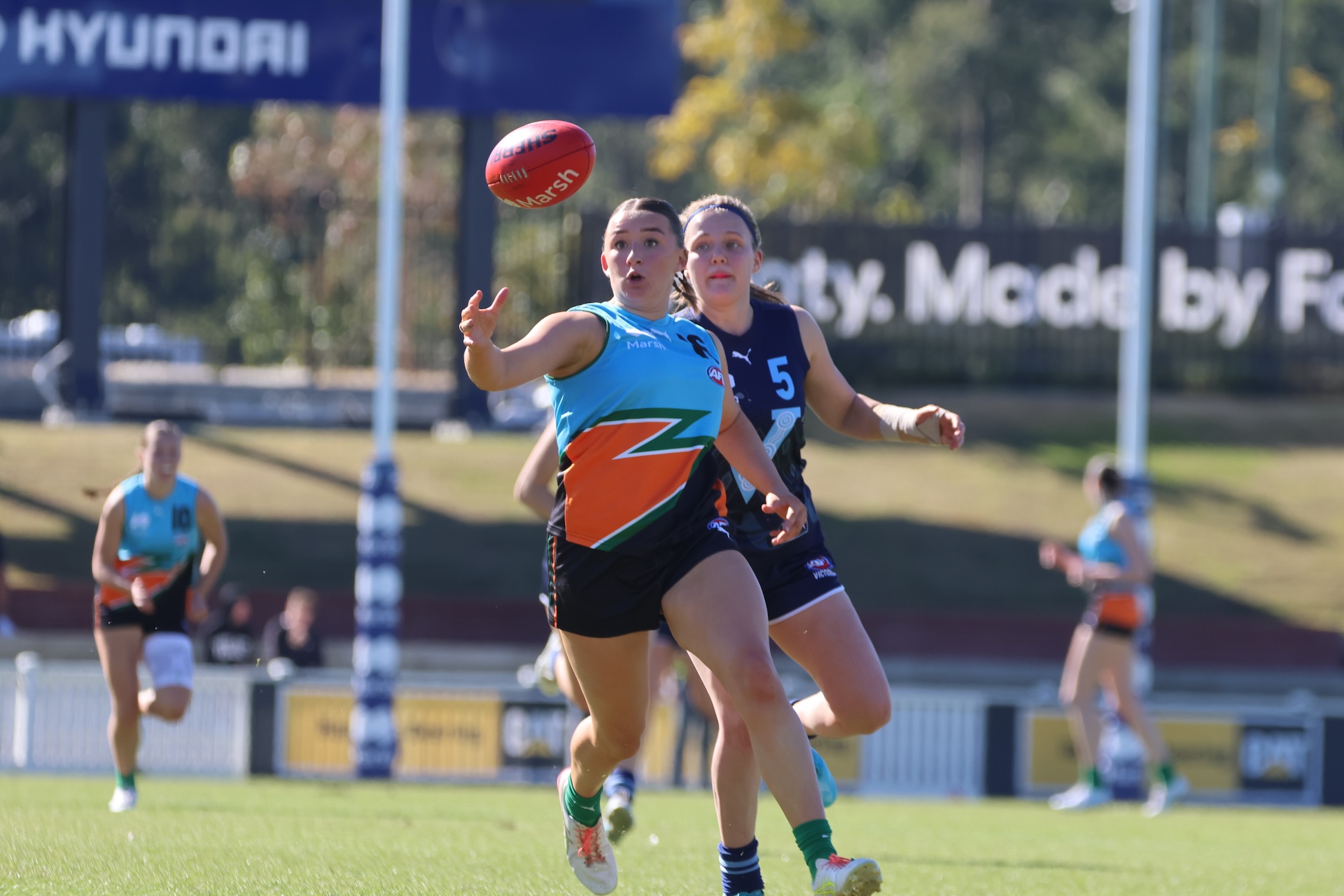
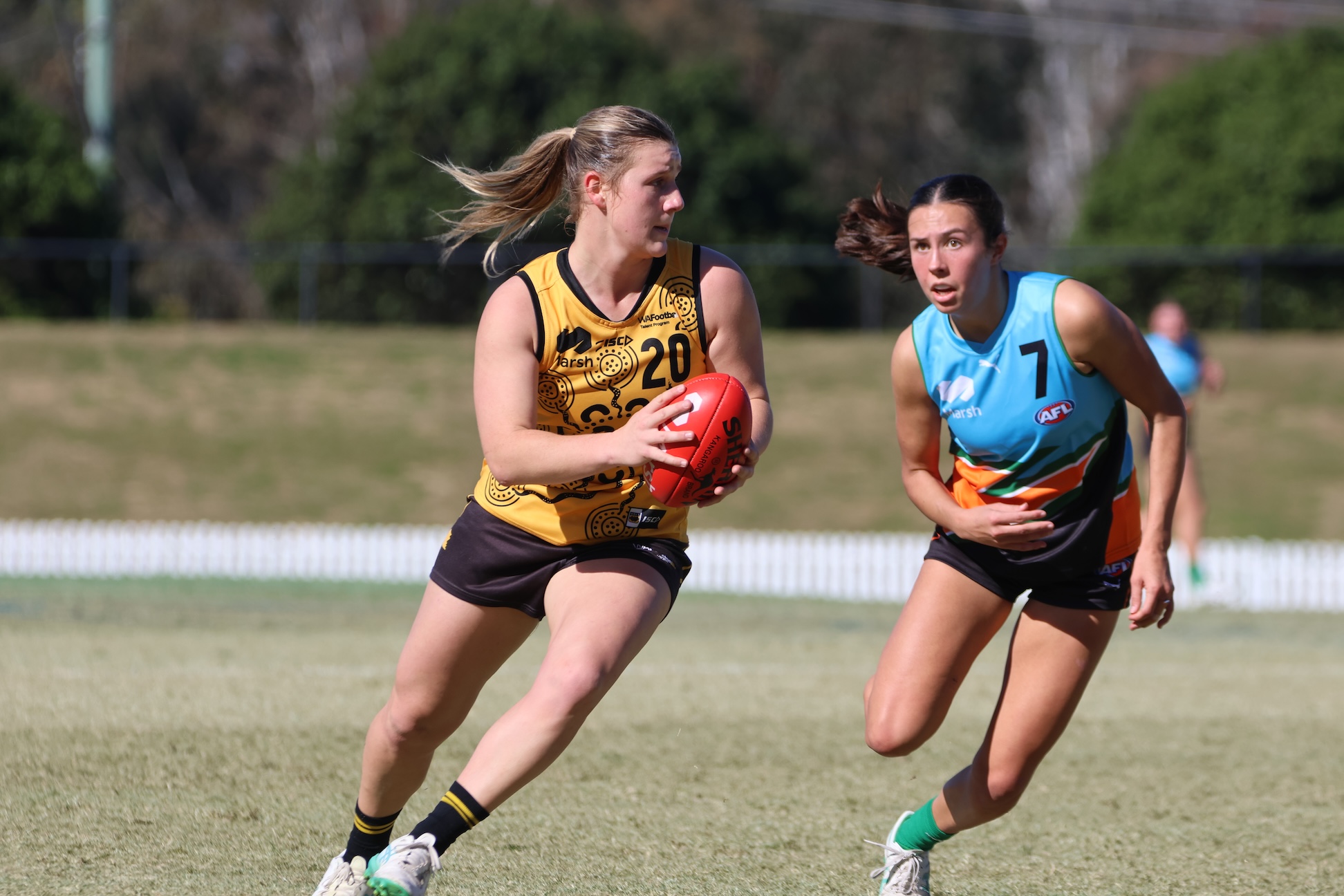

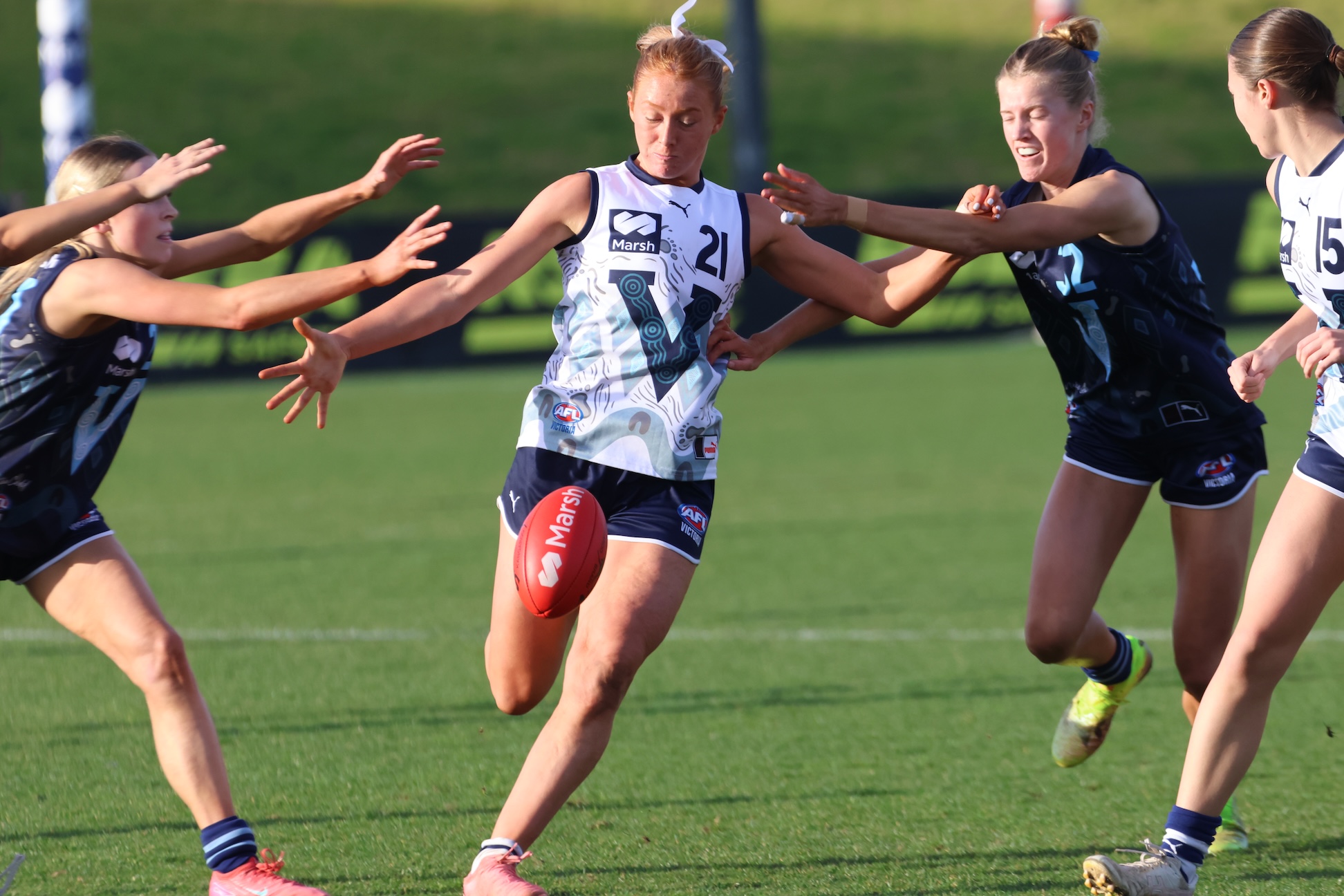
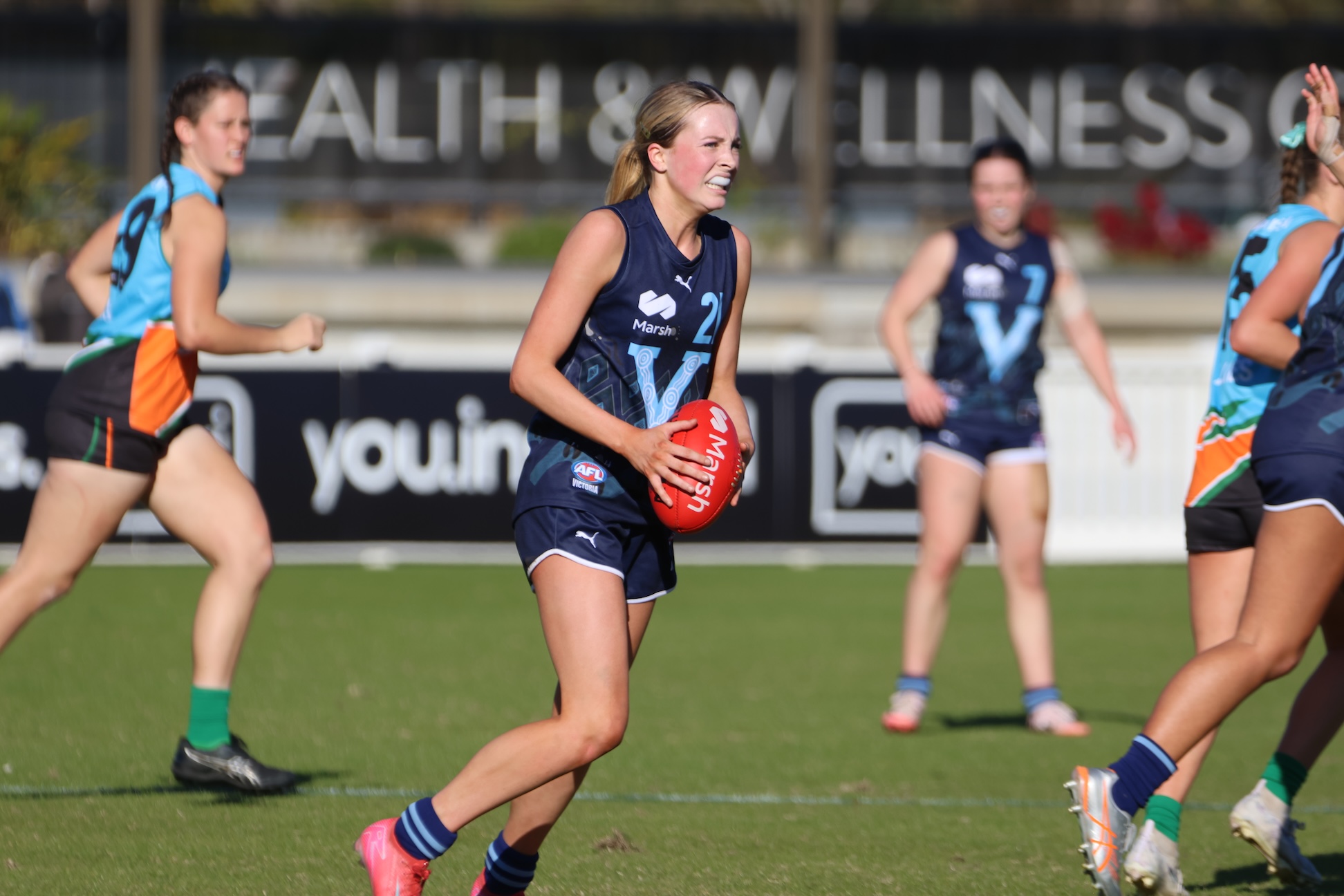
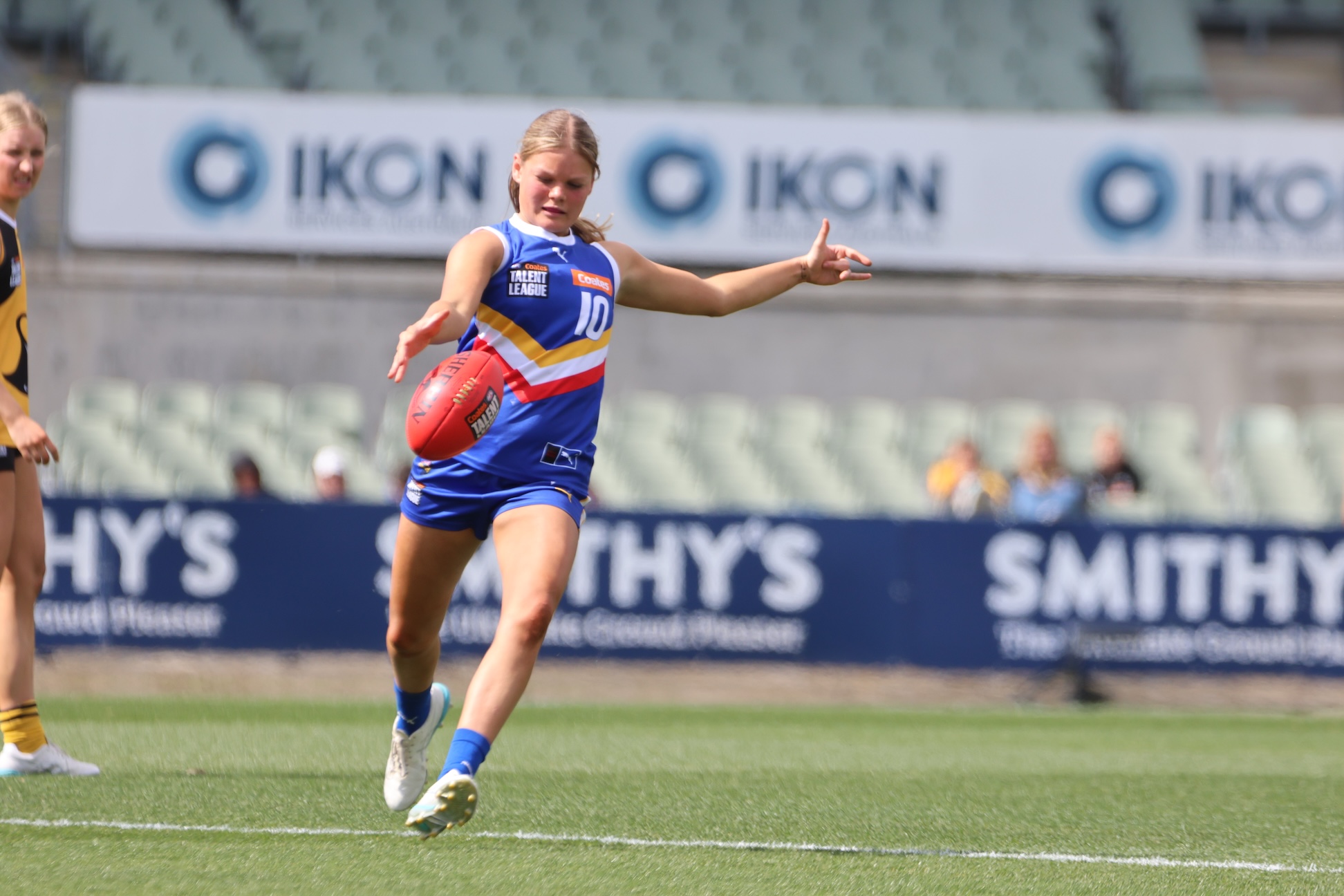
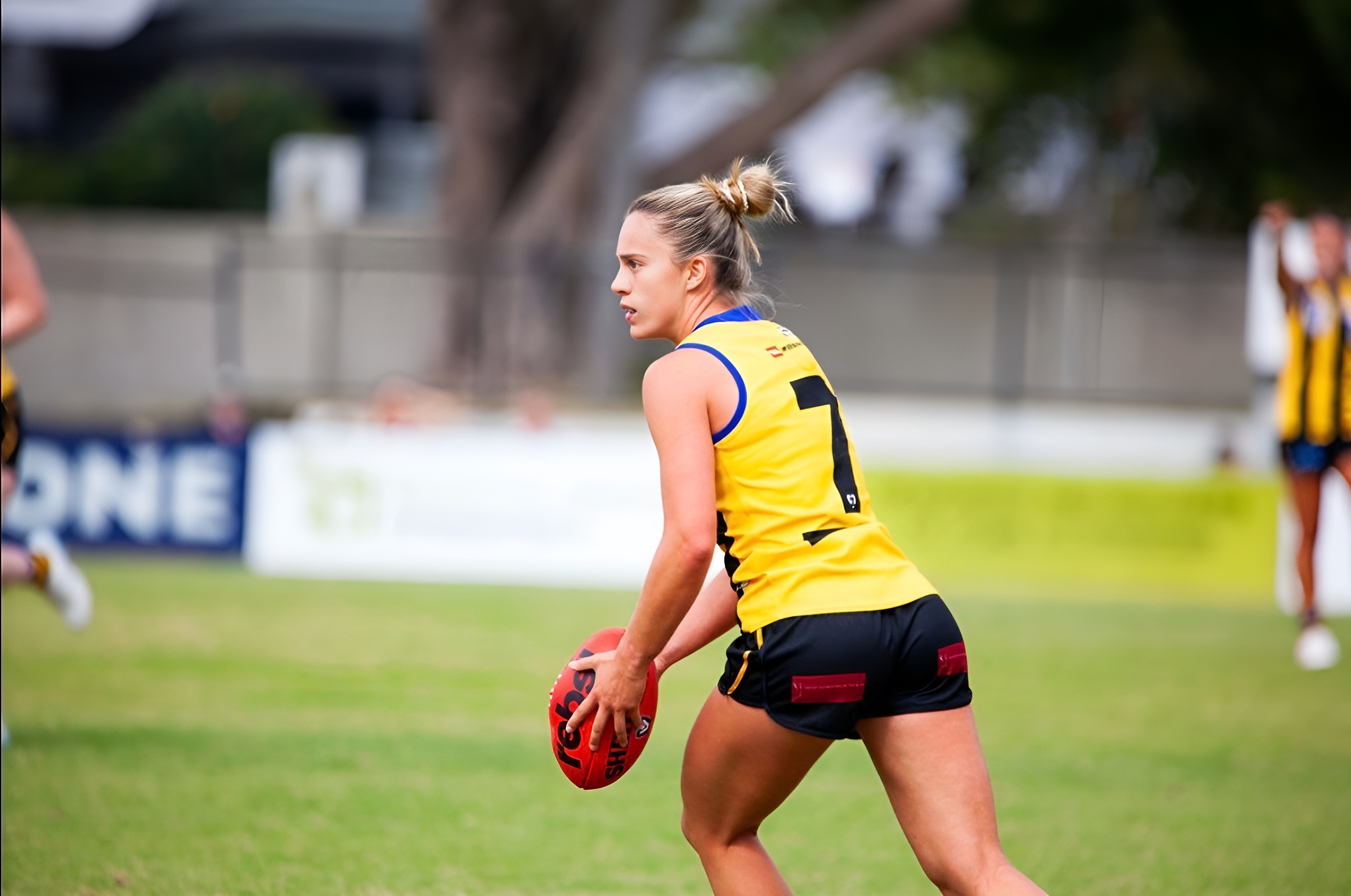


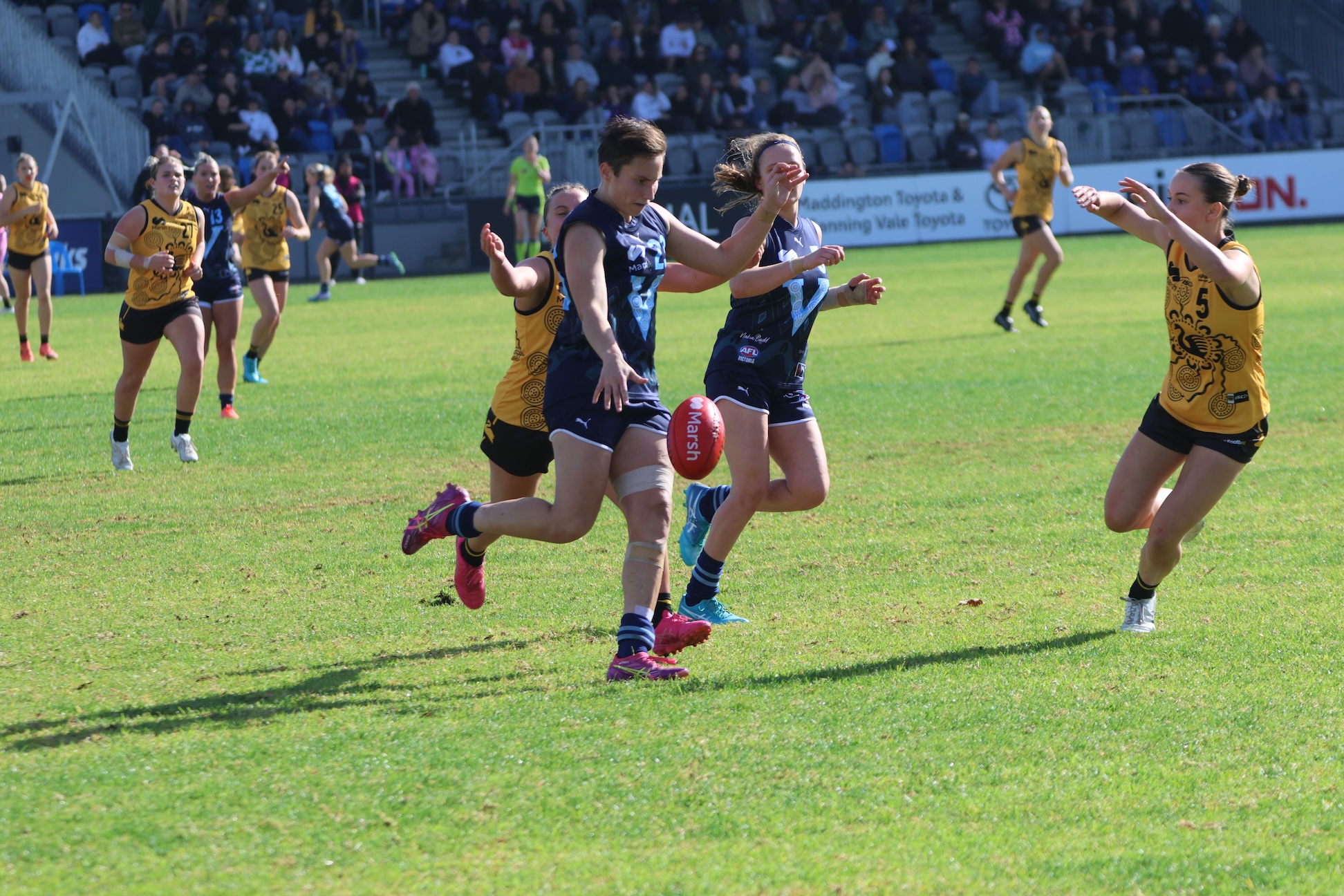
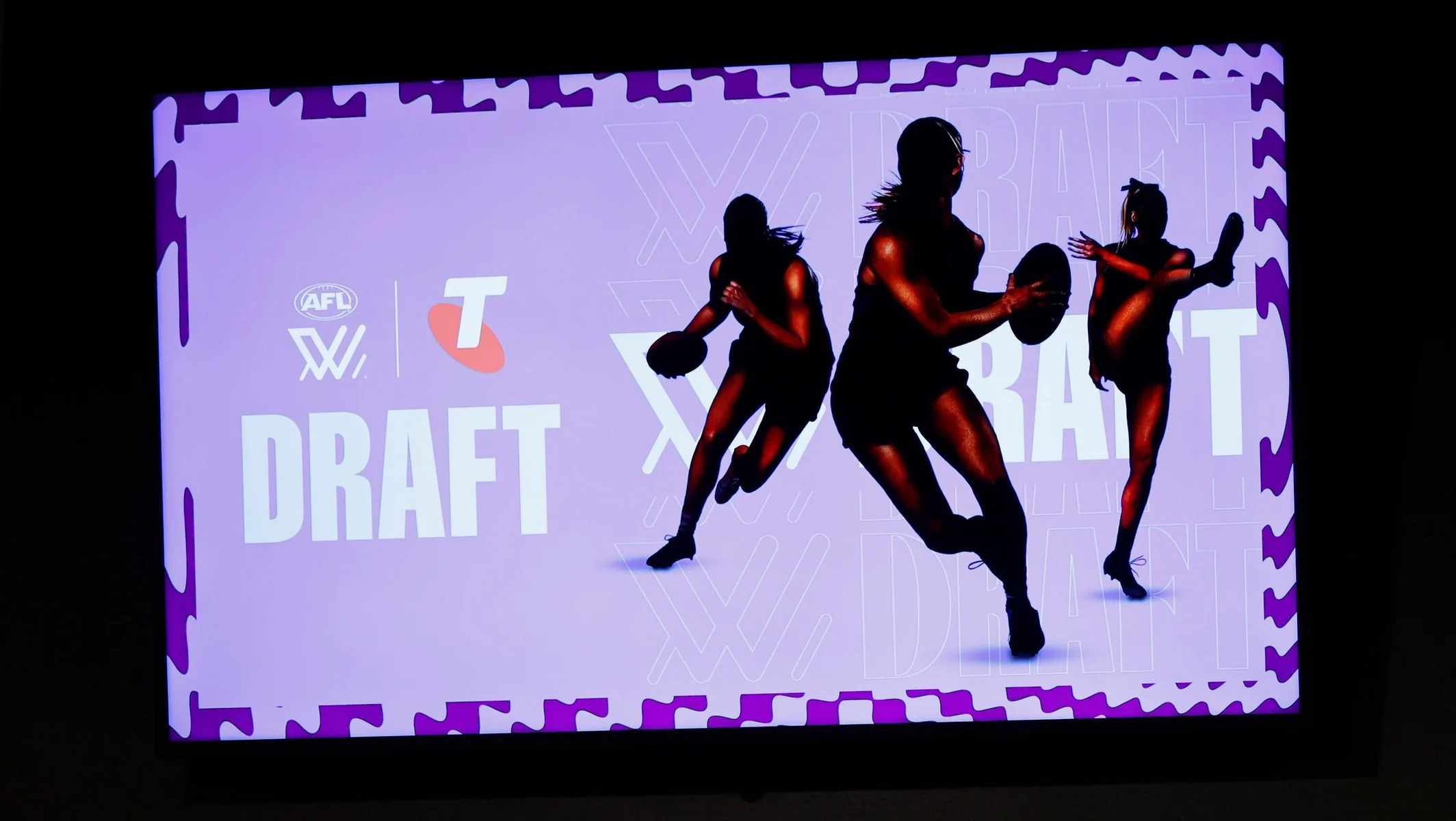
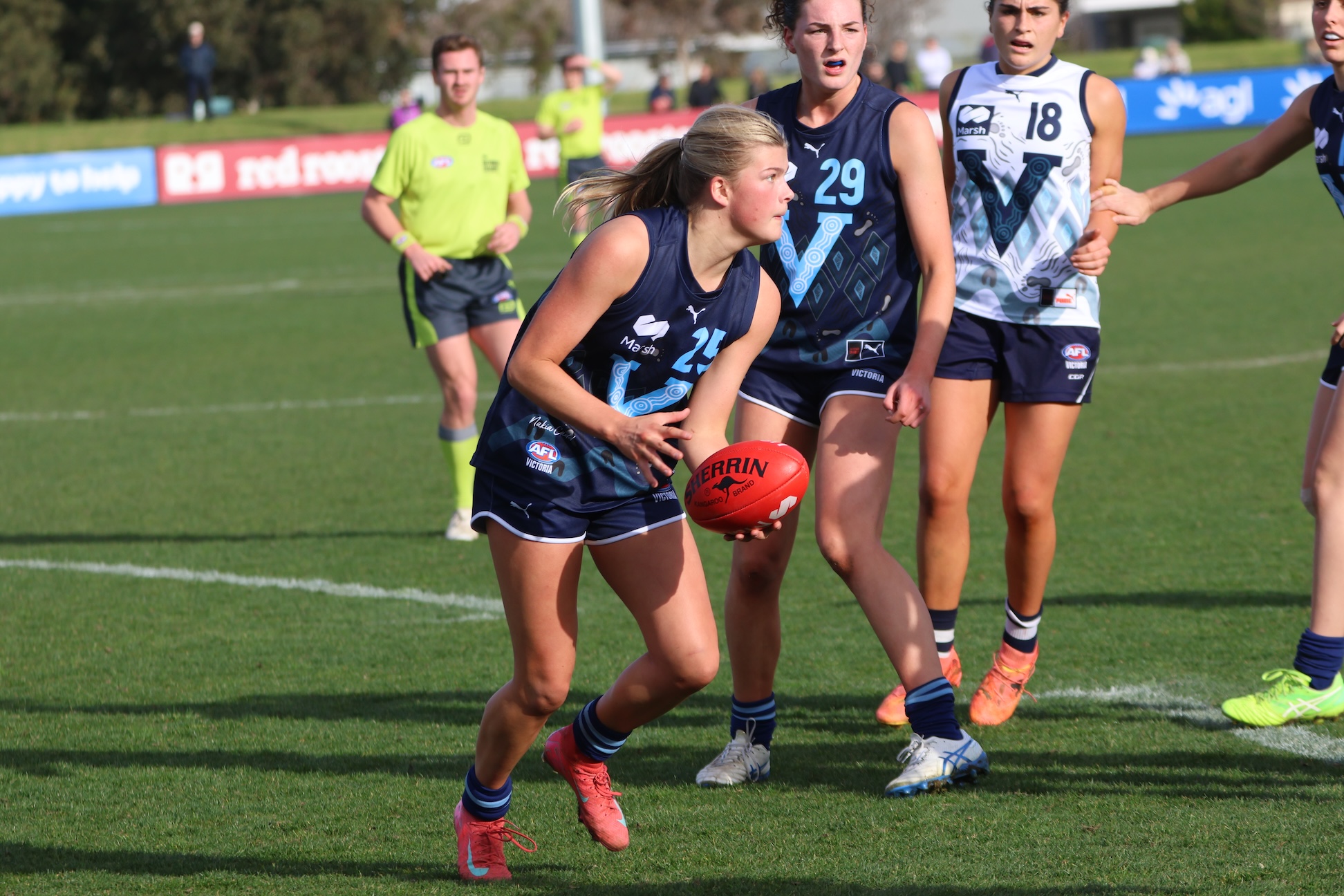
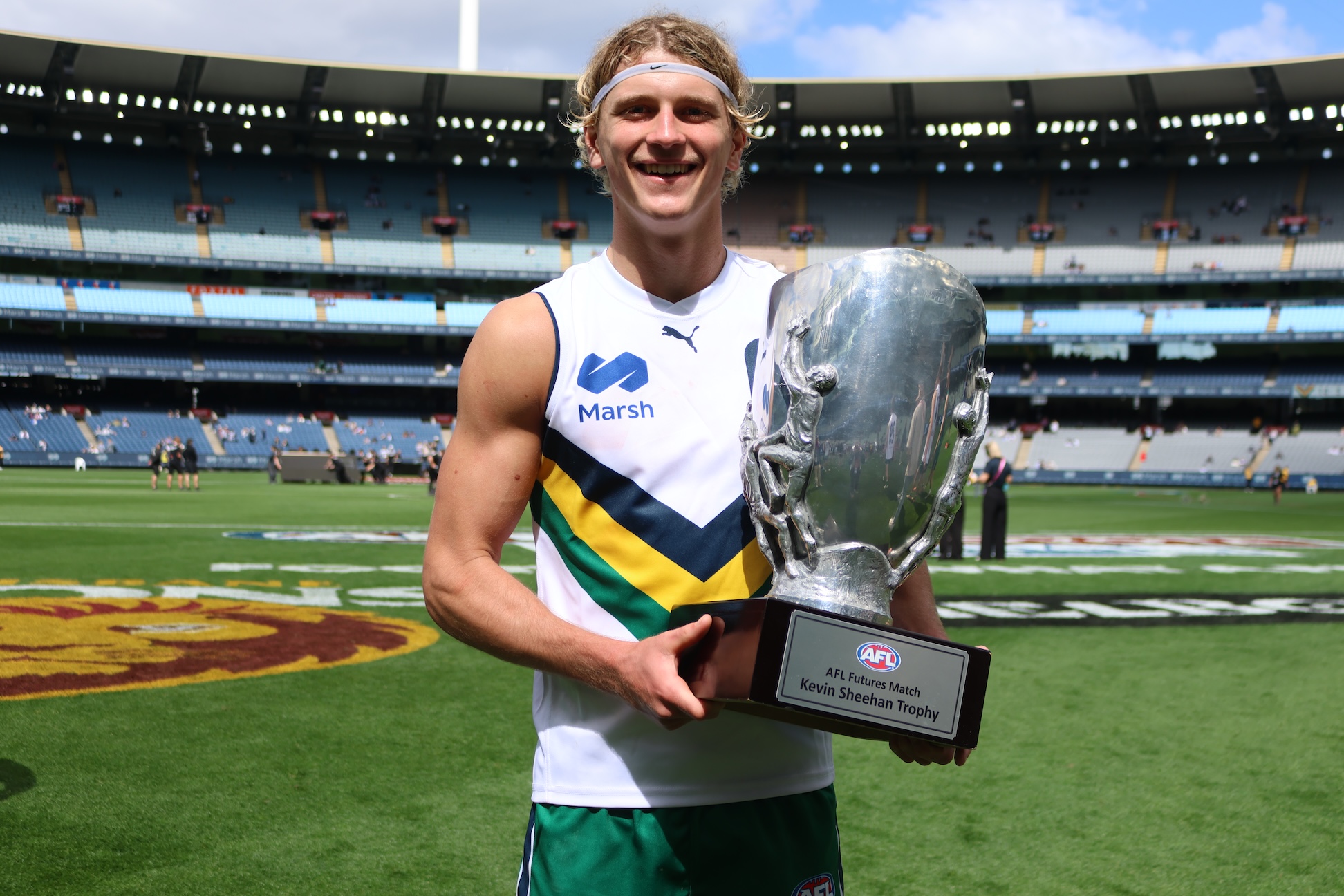
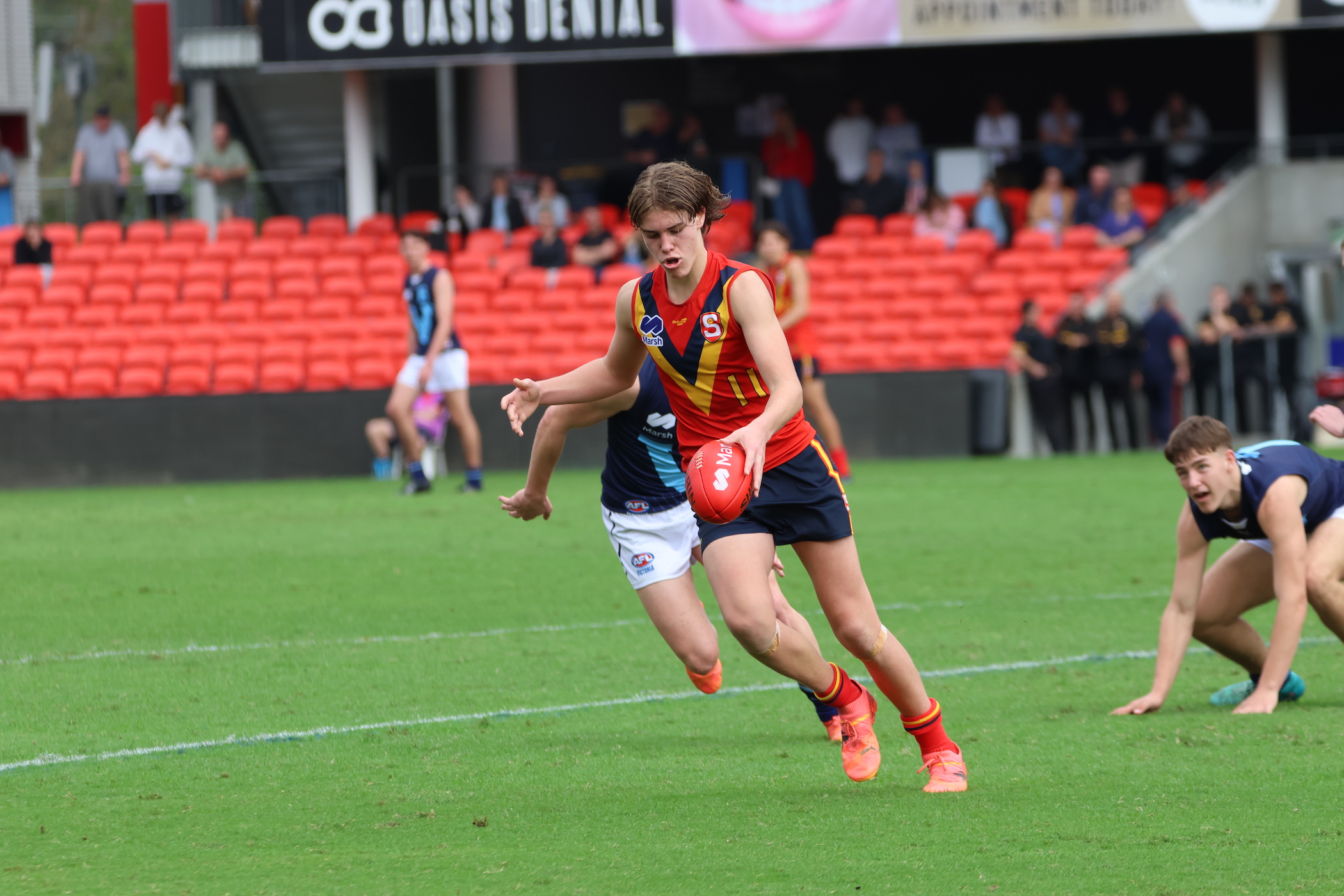
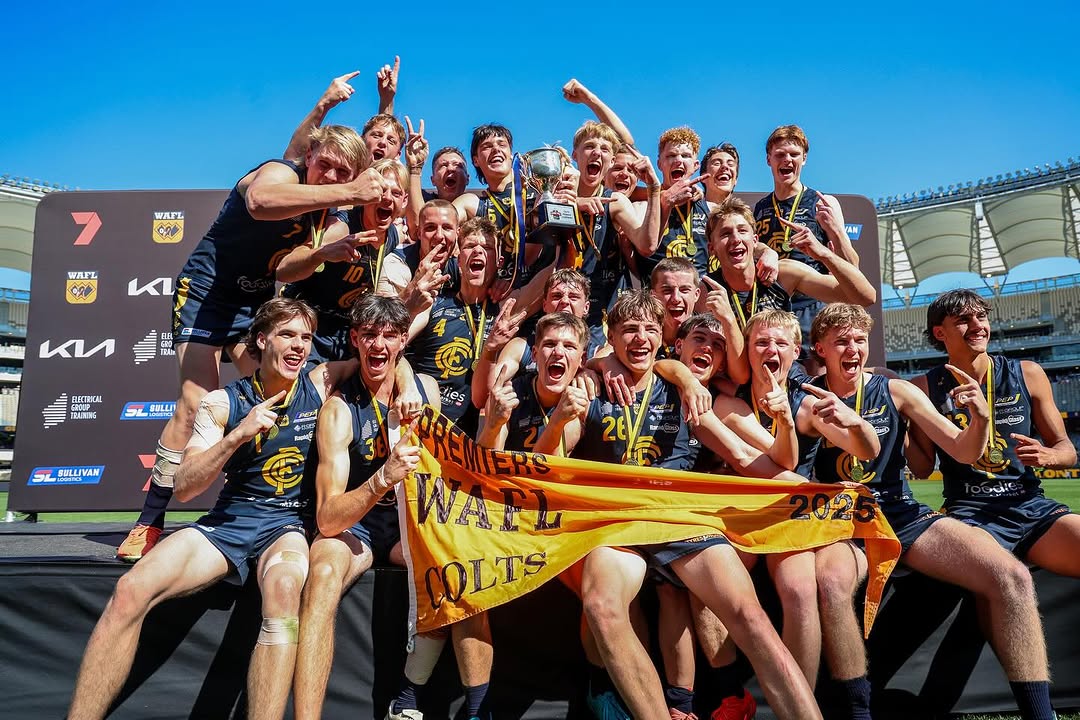
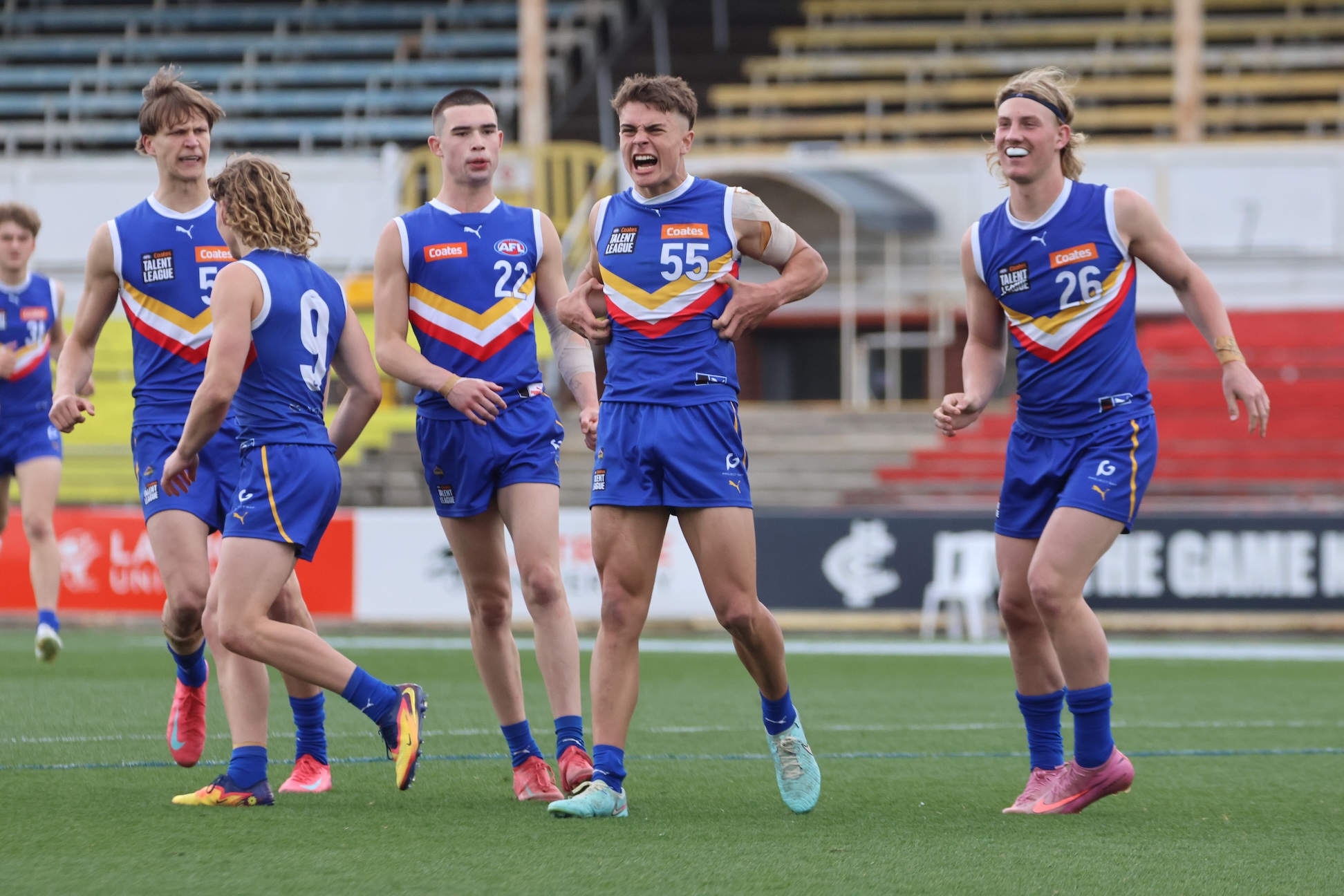
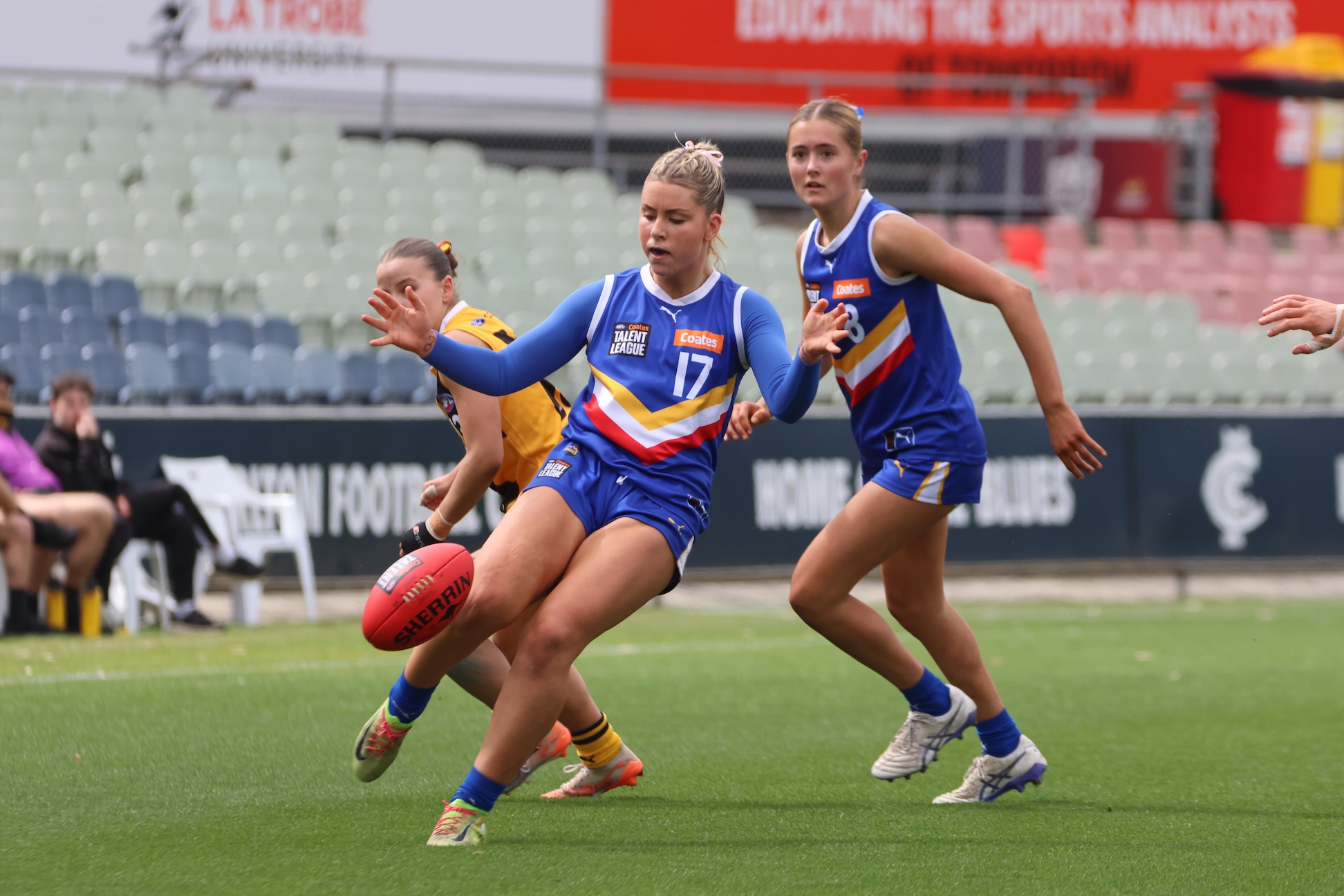
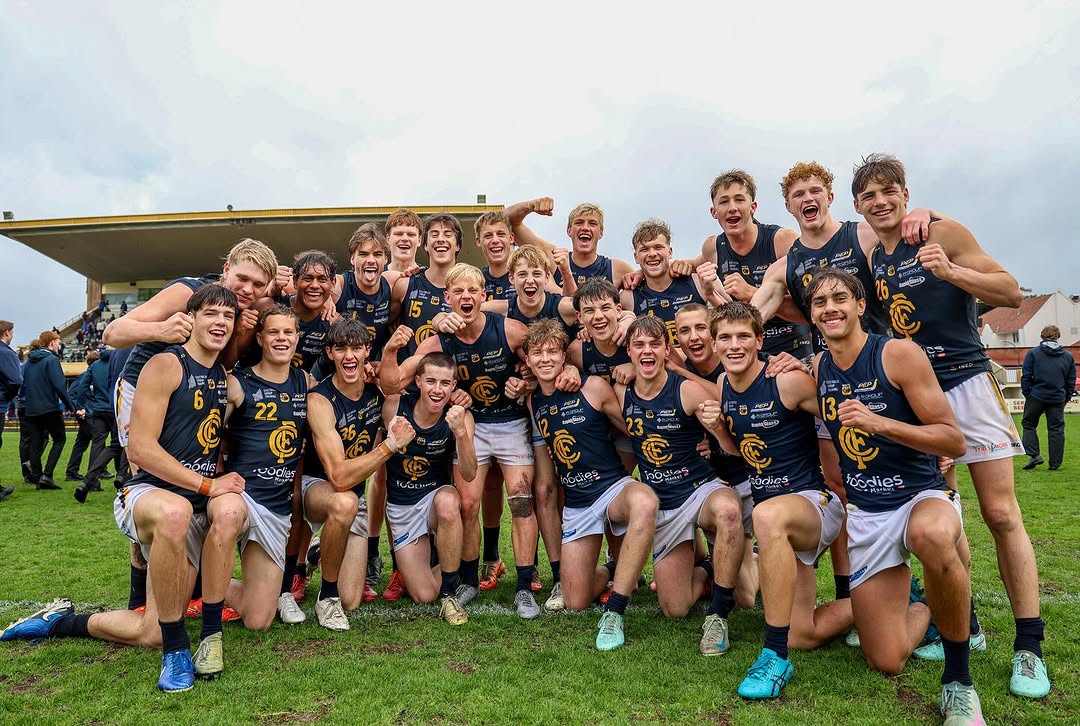
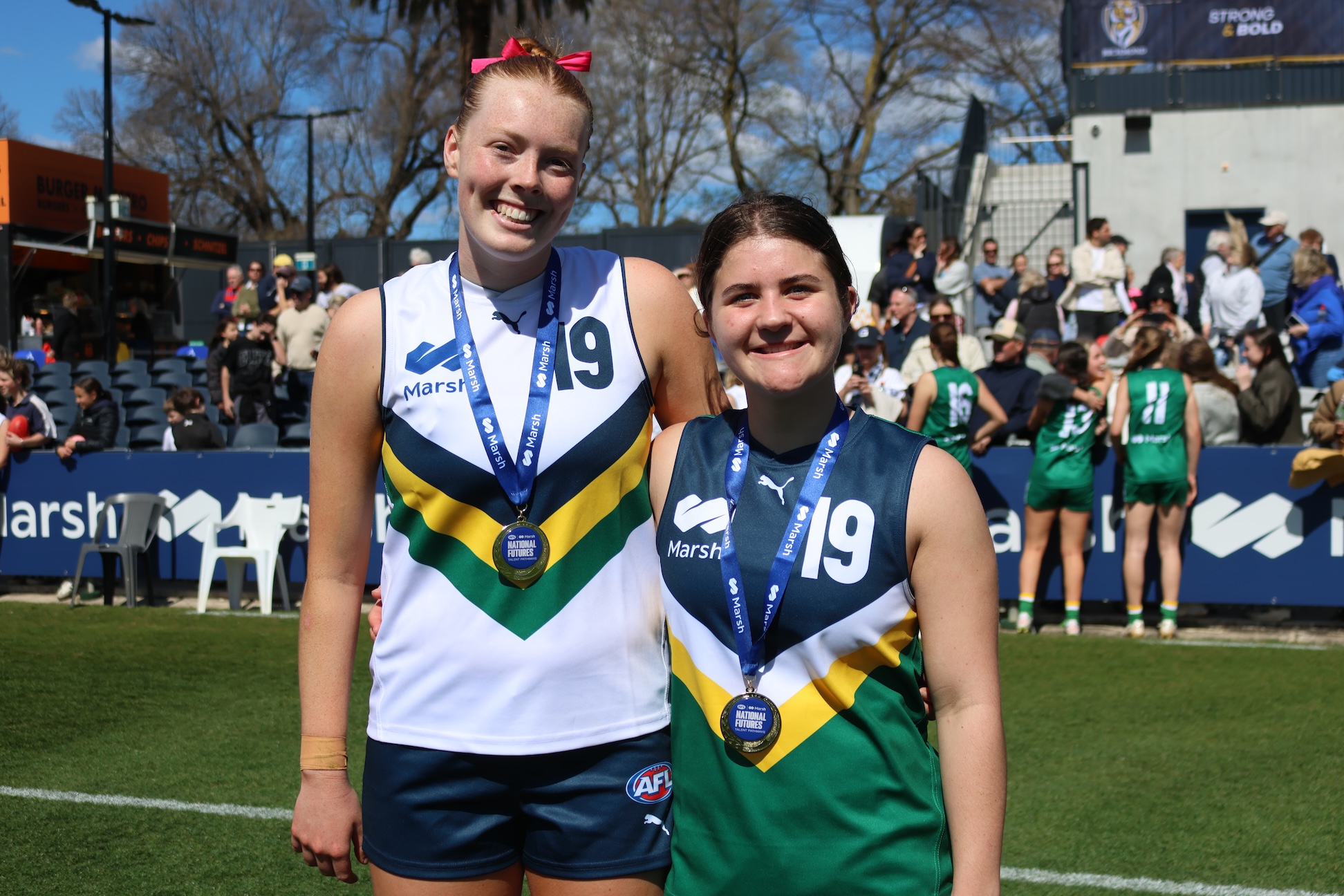
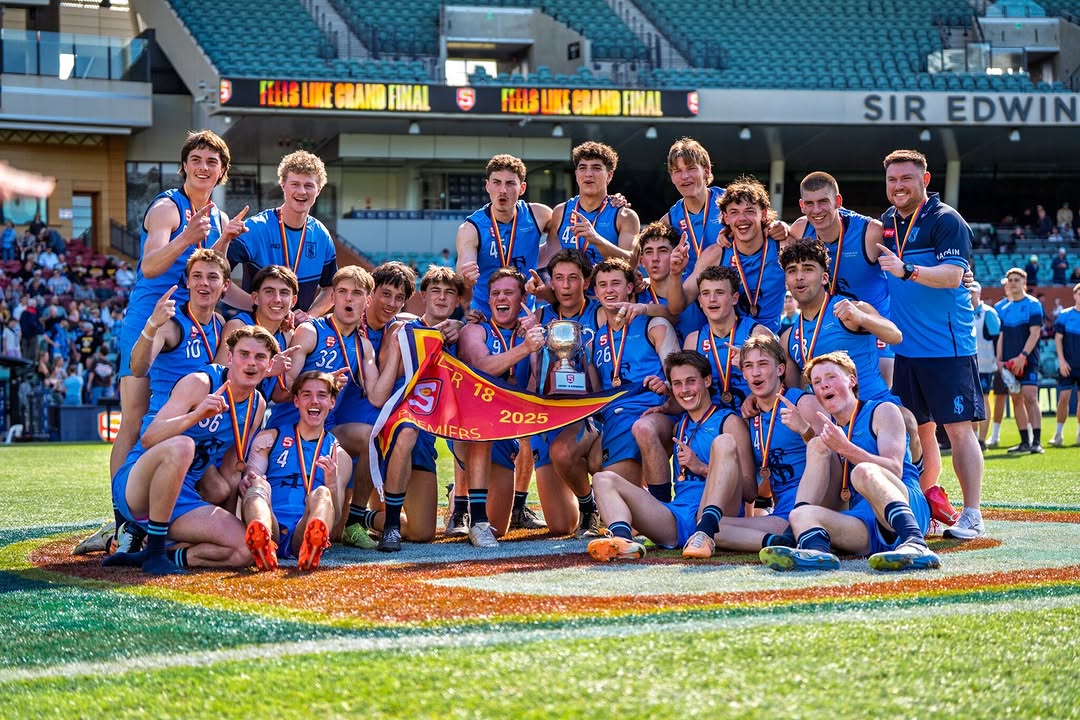
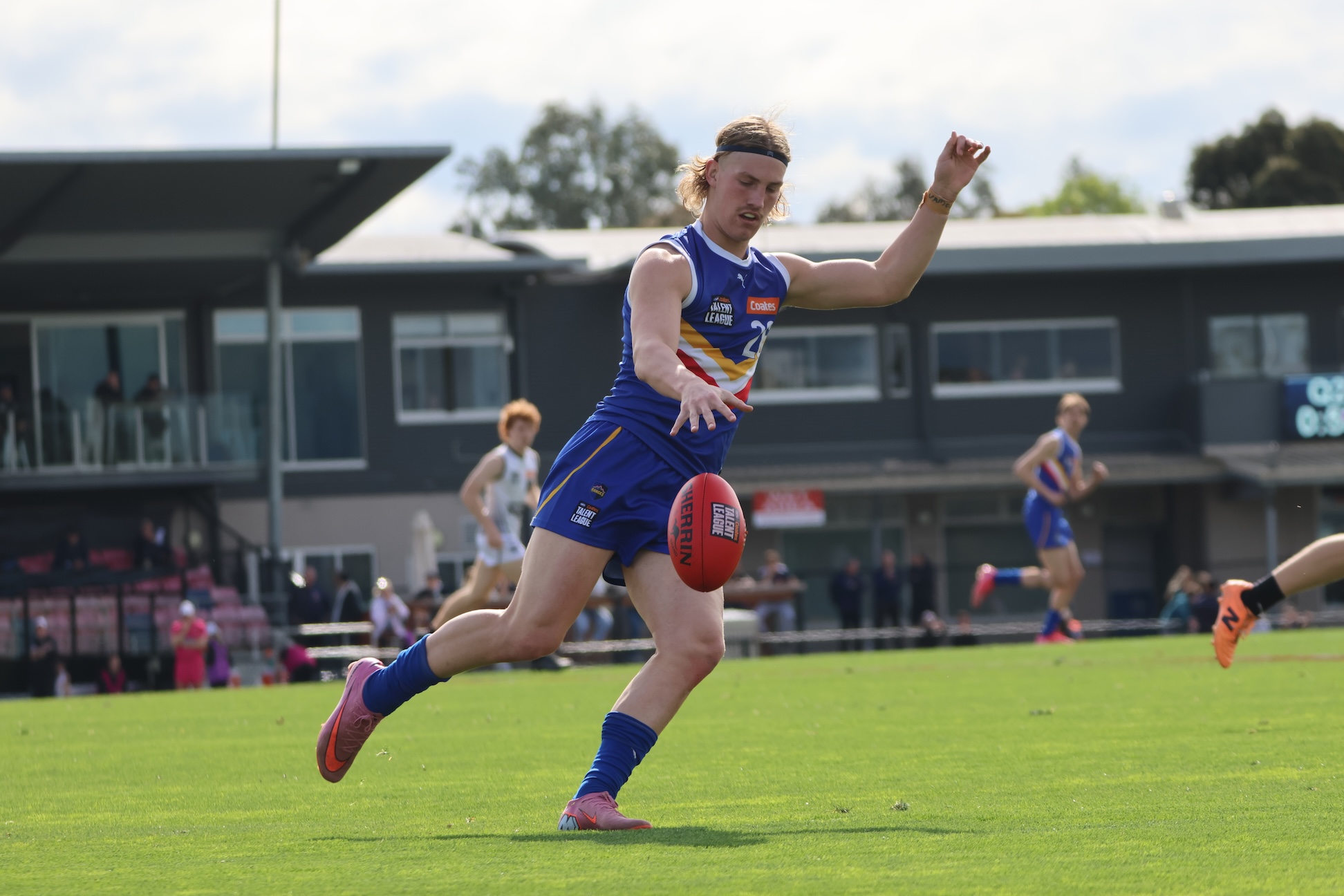
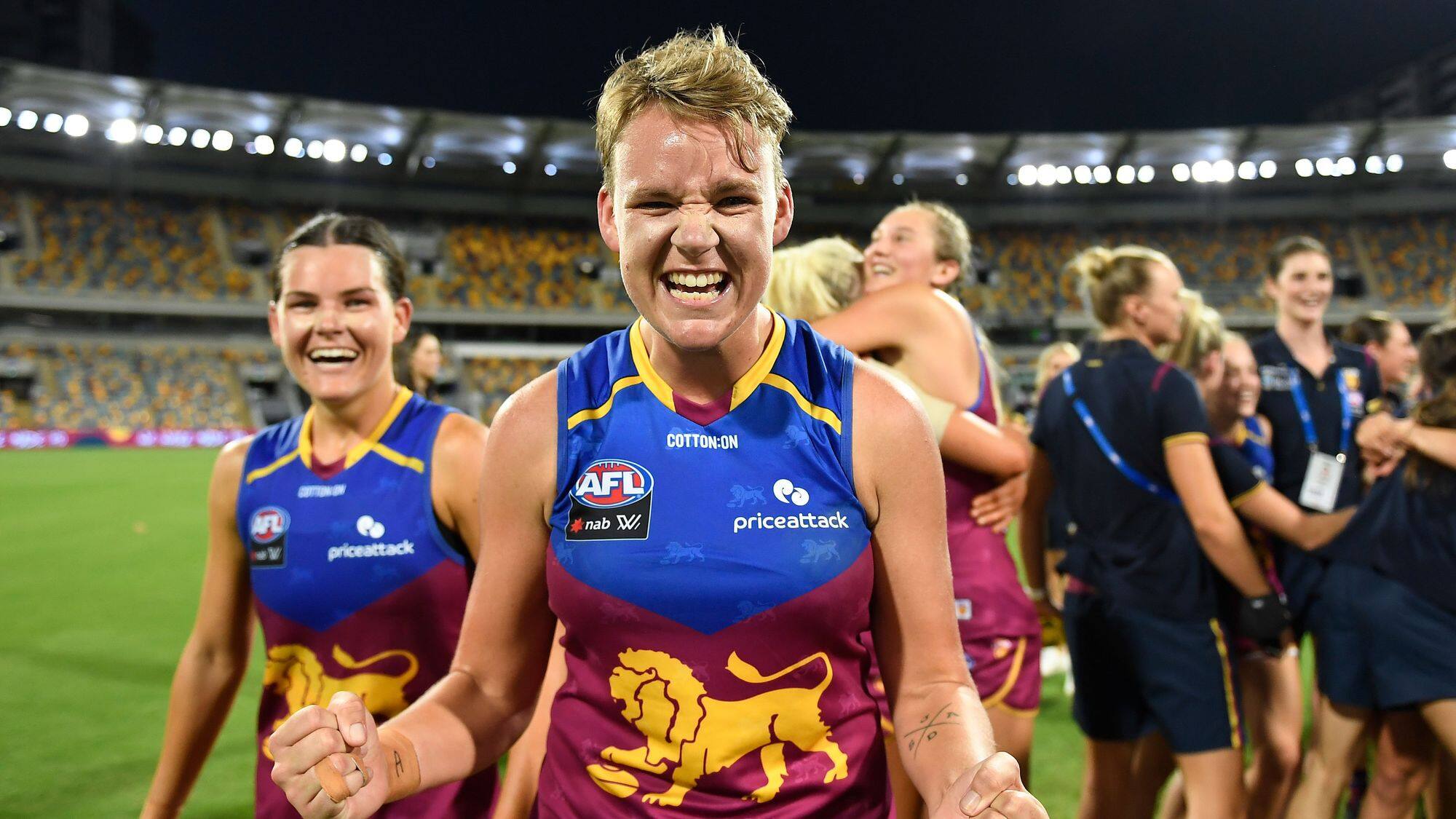
[…] >> Scouting Notes: All 46 players […]
[…] >> Scouting Notes: All 46 players […]